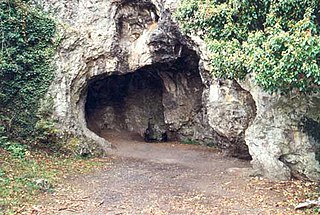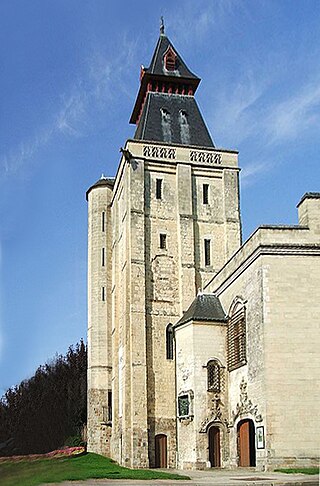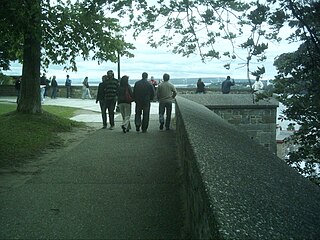
The Prix de Rome or Grand Prix de Rome was a French scholarship for arts students, initially for painters and sculptors, that was established in 1663 during the reign of Louis XIV of France. Winners were awarded a bursary that allowed them to stay in Rome for three to five years at the expense of the state. The prize was extended to architecture in 1720, music in 1803 and engraving in 1804. The prestigious award was abolished in 1968 by André Malraux, then Minister of Culture, following the May 68 riots that called for cultural change.
Below are notable events in archaeology that occurred in 1838.

Jacques Boucher de Crèvecœur de Perthes, sometimes referred to as Boucher de Perthes, was a French archaeologist and antiquary notable for his discovery, in about 1830, of flint tools in the gravels of the Somme valley.

Sir Joseph Prestwich, FRS, FGS was a British geologist and businessman, known as an expert on the Tertiary Period and for having confirmed the findings of Boucher de Perthes of ancient flint tools in the Somme valley gravel beds.
The Encyclopédistes were members of the Société des gens de lettres, a French writers' society, who contributed to the development of the Encyclopédie from June 1751 to December 1765 under the editors Denis Diderot and Jean le Rond d'Alembert, and only Diderot from 1765 to 1772.
Below are notable events in archaeology that occurred in 1863.

Spy Cave is located in Wallonia near Spy in the municipality of Jemeppe-sur-Sambre, Namur Province, Belgium above the left bank of the Orneau River. Classified as a premier Heritage site of the Walloon Region, the location ranks among the most significant paleolithic sites in Europe. The cave consists of numerous small chambers and corridors.
Dr Marcel-Jérôme Rigollot was a nineteenth-century French doctor and antiquarian famous for his role in the identification of evidence of some of Europe's earliest inhabitants.

Abbeville is a commune in the Somme department and in Hauts-de-France region in northern France.

Société des observateurs de l'homme, rendered in English as Society of Observers of Man, was a French learned society founded in Paris in 1799. Long considered the birthplace of French anthropology, the society nevertheless dissolved in 1804.

Trou de l’Abîme also known as La caverne de l'Abîme and Couvin Cave is a karst cave located in Wallonia on the right bank of the Eau Noire river in the center of Couvin, Belgium, in Namur province. During various archaeological excavations of sediment deposits, Mousterian artefacts and a Neanderthal molar were discovered.

Arago cave is a prehistoric site in the community of Tautavel, in the department of Pyrénées-Orientales. It is a large cavity overlooking a perennial stream called the Verdouble. Human remains attributed to the Tautavel Man and the lithic remnants of the Lower Paleolithic were discovered in the cave.

Cueva de Bolomor, or Bolomor Cave, is an archaeological site near Tavernes de la Valldigna in the Valencian Community, Spain. It was occupied over a long period of time, between 350,000 and 120,000 years ago.
Commission scolaire Marie-Victorin (CSMV) was a French-language, school board operating in the Province of Quebec, Canada and serving the municipality of Longueuil, Brossard and Saint-Lambert. The board's headquarters are in Longueuil.
Nicolas de Poilly, also called Nicolas de Poilly the Younger, Nicolas de Poilly jeune, or Nicolas II de Poilly, was an academically trained French artist who won the Prix de Rome for painting in 1698. Despite an impressive start, he largely abandoned painting for drawing and became an engraver like his father, his uncle François de Poilly, and several others in the Poilly family.










